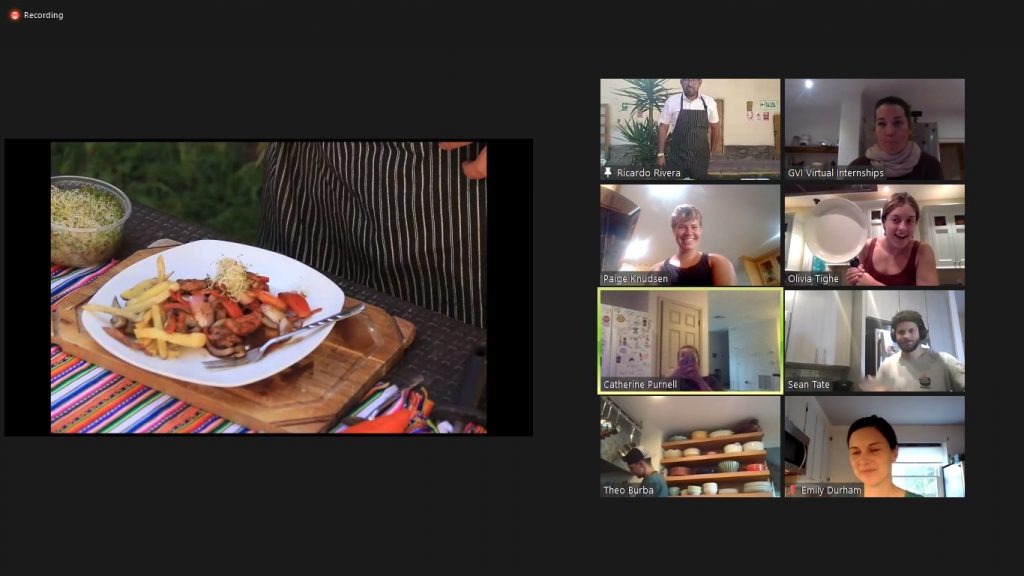
I sat nervously awaiting my first day of ACE. Hunkered down in my room on a sailboat in the blistering heat and humidity, I clicked on the Zoom link, silently praying that the internet in the middle of the ocean would come through. Even though I had briefly met my team members and team leader, Nicole, in previous Zooms leading up to the first day, it was still nerve-racking to be face-to-face (or camera-to-camera) with a group of people who I had to somehow complete a project with virtually for an organization over 4,000 miles away with team members spread across the United States.
The initial meeting flew by as we chatted about our dogs and played two truths and a lie, learning more about each other and our GVI supervisors, Nicole and Ricardo. Little did I know; the rest of the program would zoom by just as quick.
From cultural immersions, such as cooking with Ricardo or experiencing a ceremony honoring Pachamama, to peer discussions about real world topics occurring in both the United States and Peru to meetings with Mujer Peruana and those who had been through their programs, ACE in Place Peru gave me an experience I will never forget. Though the time I spent on Zoom with my teammates during these events were not always directly related to the work we were doing in Peru, it allowed us time to connect as a team and better understand the project and the country of Peru.
This was particularly crucial due to the virtual nature of the program. Had we just done the work with Mujer Peruana which for me predominantly focused on the creation of an M&E (monitoring and evaluation) document to help the organization track the change they were having on the women they educated, the program would not have been nearly as productive for me personally.
“Though I am typically an introverted person, the few hours a day we spent together were the perfect amount of time for me to learn about Peru and the project, along with my teammates, without overwhelming me.”
– Paige Knudsen, Duke Women’s Rowing
Yes, I still would have done the work. I would have put in the time to research and create the document along with my teammate Sydney; however, the opportunities to explore and learn more about Peru allowed the project to feel more personal and helped give me the motivation and energy to continue to create the best document we could put forward (shout out to Jill from GVI from teaching us about motivation in a coaching class!). They allowed me to understand the community I was trying to help and helped me better connect to the program and the partner.
Upon reflection on this, I have concluded that virtual volunteering is possible and can be very beneficial to both the organization and the volunteer. My team of five was able to assist Mujer Peruana with their three outlined goals in three weeks without ever setting foot in Peru; however, we came out of the program with a better understanding of Peru, Mujer Peruana, each other, and ourselves. The key behind this, I believe, is all the time we spent on Zoom together as a team. Though I am typically an introverted person, the few hours a day we spent together were the perfect amount of time for me to learn about Peru and the project, along with my teammates, without overwhelming me.
Virtual volunteering is not for everyone. It requires the time and effort of the project along with understanding something possibly thousands of miles away; however, if you are willing to put in the time and the effort, it can greatly impact you and the organization with which you are partnering.
